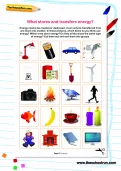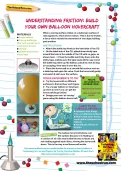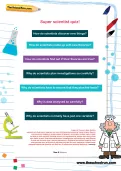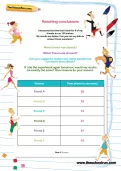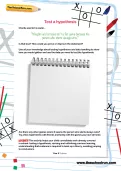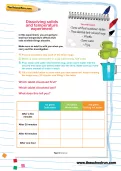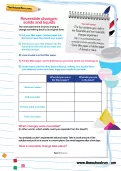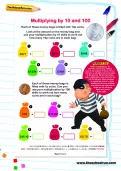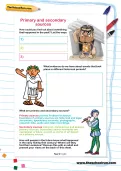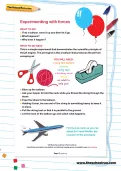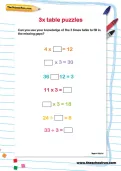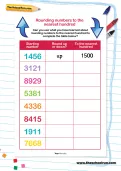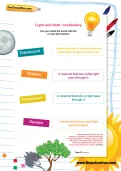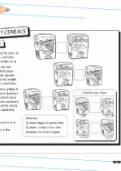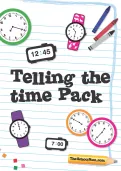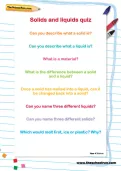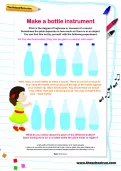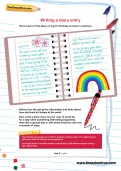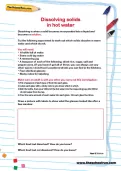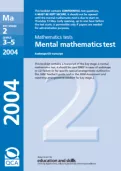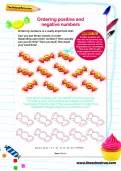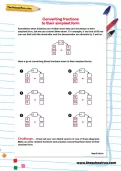A hypothesis about the game noughts and crosses which prompts children to find their own method to prove or disprove the initial statement.
or
Register to add to your saved resources
Already a subscriber? to view this content.
This experiment helps children to think about how to methodically carry out an investigation and then draw conclusions about temperature and dissolving from the results.
or
Register to add to your saved resources
An activity to help your child understand that some solids can be separated from liquids by filtering.
or
Register to add to your saved resources
Already a subscriber? to view this content.
This worksheet encourages children to think about how many 10p coins and 1p coins make up the given amounts.
or
Register to add to your saved resources
Already a subscriber? to view this content.
A sheet giving the opportunity to practise column addition using 3, 4 and 5 digit numbers.
or
Register to add to your saved resources
How do we find out about the past? What evidence is available to us, and how can we research events that happened over 100 years ago? This worksheet will help your child develop an understanding of the passing of time and encourage them to think historically.
or
Register to add to your saved resources
Already a subscriber? to view this content.
Develop your child's understanding of forces with an experiment to demonstrate the workings of a jet engine whilst encouraging scientific discussion.
or
Register to add to your saved resources
This worksheet is a 'fill in the gaps' puzzle to help your child recall their multiplication and division facts of the 3 times table.
or
Register to add to your saved resources
Already a subscriber? to view this content.
A worksheet designed to help children practise rounding numbers in the thousands to the nearest hundred.
or
Register to add to your saved resources
Already a subscriber? to view this content.
On this worksheet, children need to match the words 'transparent', 'translucent', 'opaque' and 'shadow' with the correct definitions.
or
Register to add to your saved resources
Already a subscriber? to view this content.
A worksheet to help your child understand what the <, > and = symbols mean. It also helps with understanding of grams and kilograms.
or
Register to add to your saved resources
Already a subscriber? to view this content.
Learning to tell the time is a process which spans the primary-school years, and children can find it overwhelmingly hard. The Telling the Time pack is a complete guide to everything you need to know to support your child and help them get to grips with this vital skill, bursting with practical suggestions, advice from experts and activity sheets for all the key stages.
or
Register to add to your saved resources
Already a subscriber? to view this content.
A quiz involving questions about solids and liquids for children to test their knowledge with.
or
Register to add to your saved resources
An activity to encourage children to think about how the amount of air in an instrument affects the pitch it makes.
or
Register to add to your saved resources
This worksheet shows an example diary entry and then encourages children to write their own, thinking about various features of diary writing.
or
Register to add to your saved resources
Already a subscriber? to view this content.
This activity encourages children to toss a coin several times and then record the data in order to test a hypothesis about probability.
or
Register to add to your saved resources
This experiment helps children to see clearly how some solids dissolve in hot water and some solids do not.
or
Register to add to your saved resources
Already a subscriber? to view this content.
Download and print this complete set of Maths SATs papers from 2004 to assist your child in preparing for the tests.
or
Register to add to your saved resources
On this sheet, children can cut out sweets labelled with negative and positive numbers and then put them in order. There is also a blank template for them to make their own activity.
or
Register to add to your saved resources
Already a subscriber? to view this content.
A worksheet demonstrating how to use division to convert fractions to their simplest form. Answer sheet included.
or
Register to add to your saved resources
Already a subscriber? to view this content.
